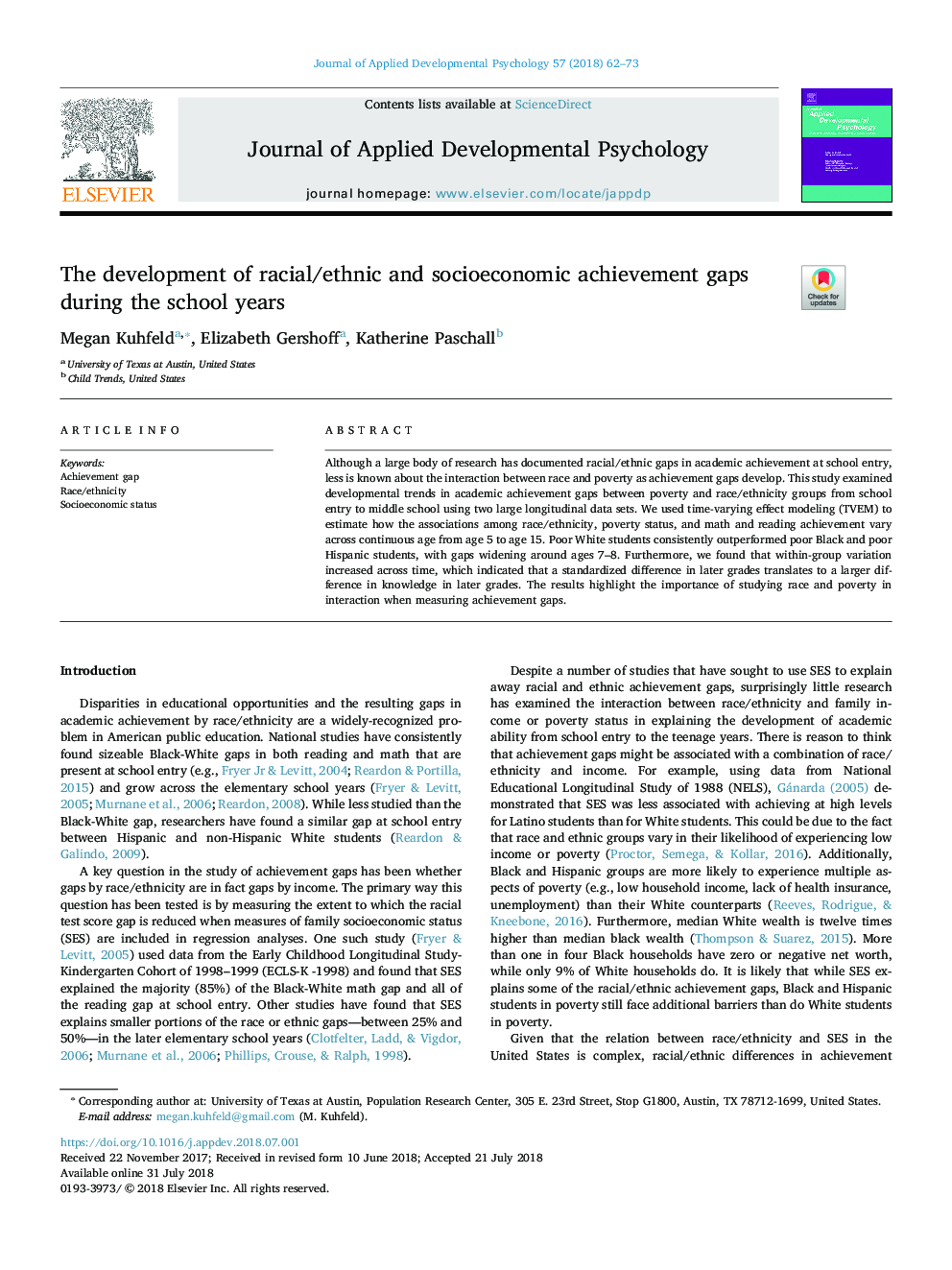| Article ID | Journal | Published Year | Pages | File Type |
|---|---|---|---|---|
| 6842739 | Journal of Applied Developmental Psychology | 2018 | 12 Pages |
Abstract
Although a large body of research has documented racial/ethnic gaps in academic achievement at school entry, less is known about the interaction between race and poverty as achievement gaps develop. This study examined developmental trends in academic achievement gaps between poverty and race/ethnicity groups from school entry to middle school using two large longitudinal data sets. We used time-varying effect modeling (TVEM) to estimate how the associations among race/ethnicity, poverty status, and math and reading achievement vary across continuous age from age 5 to age 15. Poor White students consistently outperformed poor Black and poor Hispanic students, with gaps widening around ages 7-8. Furthermore, we found that within-group variation increased across time, which indicated that a standardized difference in later grades translates to a larger difference in knowledge in later grades. The results highlight the importance of studying race and poverty in interaction when measuring achievement gaps.
Related Topics
Social Sciences and Humanities
Psychology
Applied Psychology
Authors
Megan Kuhfeld, Elizabeth Gershoff, Katherine Paschall,
